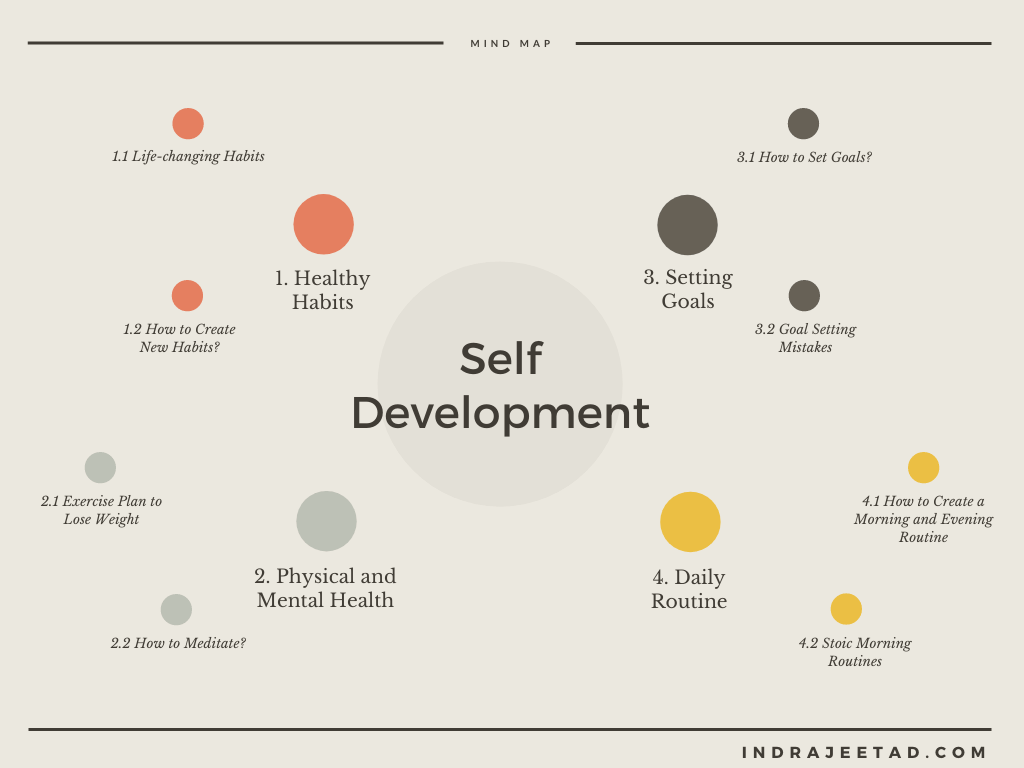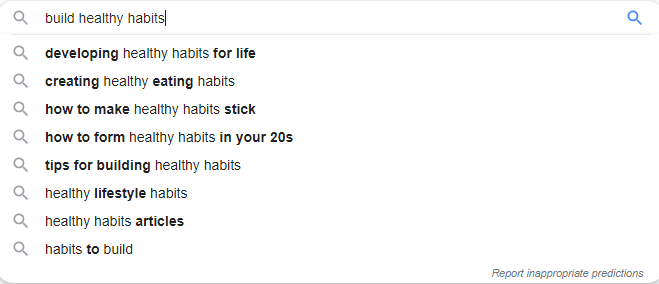If you are a hobby blogger or a professional writer, you might be aware of the much-dreaded writer’s block. It creeps up when you know what you want to write, but you can’t string together a sentence because your brain is just jaded.
The worse is when you have no idea about what you want to write. You just sit there staring at the cursor as time ticks away.
Coming up with new topics when you sit down to write can be daunting, and frankly, it’s not a good strategy either. If you want to create content consistently, you need to have a bunch of ideas ready even before you plan to write.
In this article, we will look at six practical ways that will help you come up with new content ideas in no time.
Let’s get down to it!
Table of Contents
1. Write Down Different Topics in Your Blogging Niche
Before we follow a keyword-driven approach to ideate new content ideas, begin by jotting down all the topics, ideas you know in your blogging niche. The content ideation process becomes significantly easier when you start with what you already know.
For example, if you are blogging on the topic of Personal Development, then lay out the different aspects of it. Here are a few topics for inspiration:
- Daily routine
- Healthy habits
- Reading
- Goals
- Cultivating new skills
- Procrastination
- Physical and mental health
- Finances
(Let’s call this the master list for future references)
Write out as many topics as you can think of. The next step is to pick a topic(s) and identify its subtopics. So, if we choose the topic of Goals from the master list, here are the different subtopics you can cover:
- How to set goals
- How to set fitness/finance/professional goals
- Mistakes people make when setting goals
- How to review your goals daily/weekly/monthly, and so on
If you are a visual learner, you can use mind maps to visualize these topics.

2. Interlink Topics to Create New Content Ideas
Pick any two topics from the master list and see if you can come up with new content ideas. James Altucher calls this the idea sex. Basically, you take two topics and generate new content ideas by merging them.
So, by combining daily routine, habits, or goals from the master list, here are a few topics for inspiration:
- How to make goal-setting a part of your morning routine?
- How to build a routine that supports your goals?
- How to develop productive habits through your daily routine?
The possibilities are endless, so you are restricted by your imagination.
These two steps have laid the foundation for coming up with new content ideas. You can now adopt the keyword-driven approach to find new ideas that delve deeper into the aspects of your niche.
3. What Answers Were You Looking for as a Beginner?
Learning a new skill, topic, or discipline as a beginner is arduous. You spend plenty of time looking for answers to your queries to increase the understanding of whatever you are learning.
A great way to generate compelling blog content topics is to tap into this reserve of questions. Look at your topic from an amateur’s perspective and come up with as many questions as you can.
Let’s pick cultivating new skills as the topic from our master list. Here’s a list of questions a beginner might have:
- What skills should I develop to improve myself?
- How can I get over the learning plateau?
- What are some learning techniques to enhance my skill learning ability?
- How can I develop new skills on my own?
- What skills contribute to building great habits and routines?
And not all questions had answers available on the internet when you started. But now that you’re better at what you do, you can choose to create content around those topics.
Another approach to this is what Tim Ferriss calls “Scratch your own itch.”
Pick topics that you find fascinating. If you already have an understanding of them, you can get to writing straight away. Otherwise, you can learn more about those topics and write when you’re qualified enough.
4. Use Google to Find Topic Ideas
Once you have identified a set of content ideas, you can now use tools offered by Google to refine them into blog topics. Here are six Google tools/features you can use:
- Google Keyword Planner: Although Google Keyword Planner is primarily used to find keyword ideas for PPC campaigns, its keyword suggestions are useful for SEO and content generation as well. This tool provides you with the average monthly searches and competition for keywords which can help you choose the keywords that you can rank for
- Keyword Suggestions: Start typing in queries or keywords in Google, and you will get recommendations on what people are usually searching for. Here are the keyword suggestions for build healthy habits:

- Competitor Content: When you search for a particular keyword, look at the links in the search engine result page (SERP). These results will give you an idea of what type of content is trending at the moment

- Related Search Queries: At the bottom of a SERP, you will see related search queries that you can utilize

- Google Trends: Google Trends shows the popularity of keywords/queries on Google. The tool doesn’t return search volume, but you can use the tool to decide whether it is worth creating content considering the popularity. You can also use Related topics and Related keywords to identify new keyword ideas
5. Use Social Media and Forums to Generate New Blog Topic Ideas
Besides using the creative ways and Google tools to come up with content ideas, here is a mixed bag of suggestions you can try:
- Search for keywords, topics, or queries on Pinterest, Twitter, Quora, Reddit, and niche forums to see what people are sharing. You can use Twitter’s advanced search feature to find refined content suggestions. Here’s an example of the results returned by Quora for the build healthy habits query:

- Use tools like Ubersuggest or SEMrush to get a comprehensive overview of your keywords and content
- Take your favorite books on the topic of your choice and look at the index, glossary, and bibliography. You would have already found zillions of suggestions that you can use to create content
6. Use Headline Generators
Once you have identified keywords or topic ideas, deciding upon a topic can be confusing. In such scenarios, use headline generators to do the legwork for you. Just type in the list of keywords, and you will be recommended a list of blog topics.
Here are some widely used headline generators:
- Sumo Kickass Headline Generator
- Portent’s Content Idea Generator
- HubSpot’s Blog Idea Generator
- SEOPressor’s Blog Title Generator
- CoSchedule’s Headline Analyzer
Keep in mind that these tools may not return the ideal suggestions all the time. Take the time to experiment with different generators and tweak the suggestions using your domain expertise and what has worked for you in the past.
Wrapping Up
I’m sure this primer will help you a lot in generating new blog topic ideas. The key to successful content idea generation is to dedicate some time to come up with as many content ideas as possible.
Don’t judge the ideas when they come to mind. Once you have written down 40-50 topics, you can easily eliminate the ones that you don’t find interesting.
Also, keep a pen-paper or a note-taking tool handy to jot down ideas whenever they come to your mind. You never know when inspiration will strike!
Image Credits: Andrew Neel